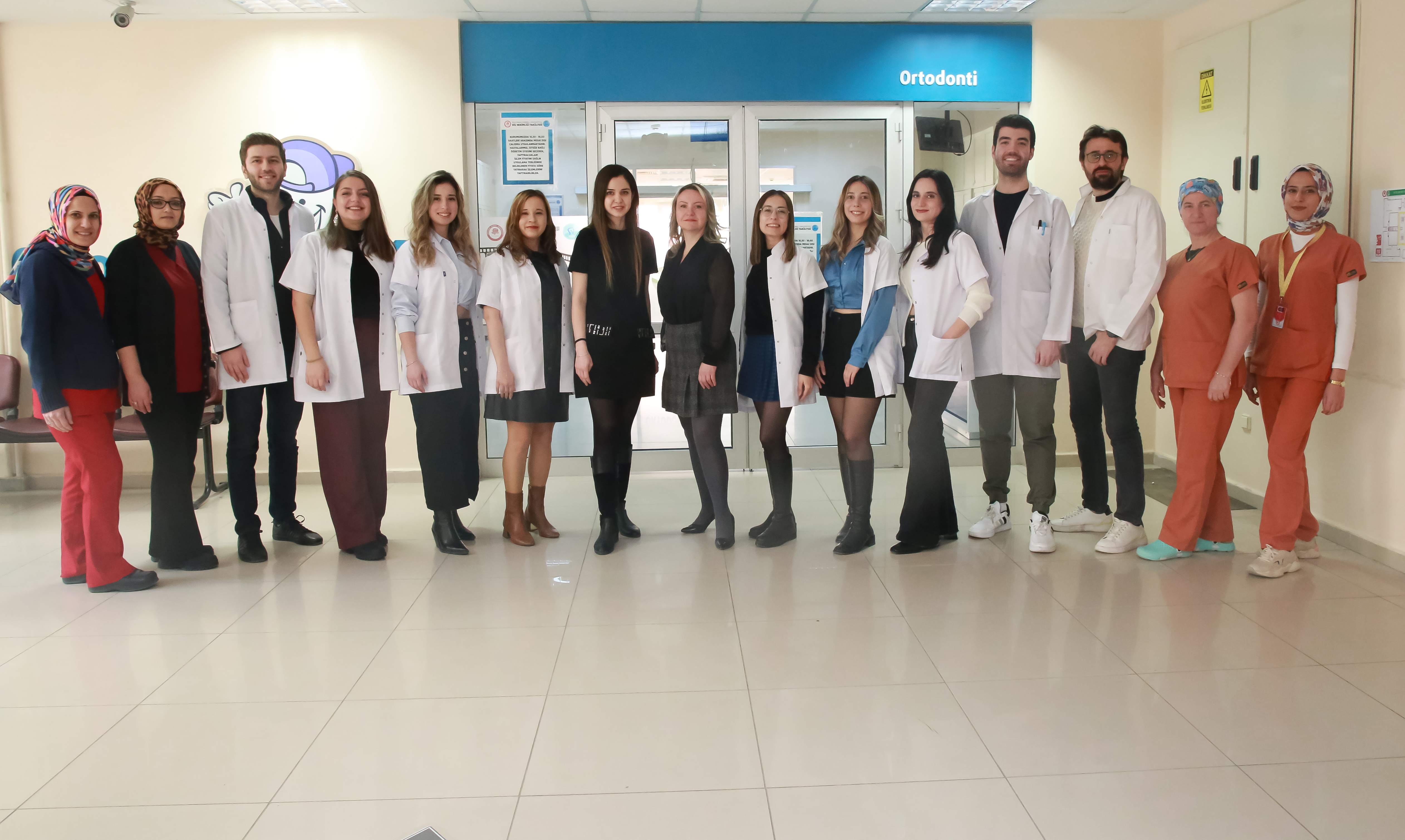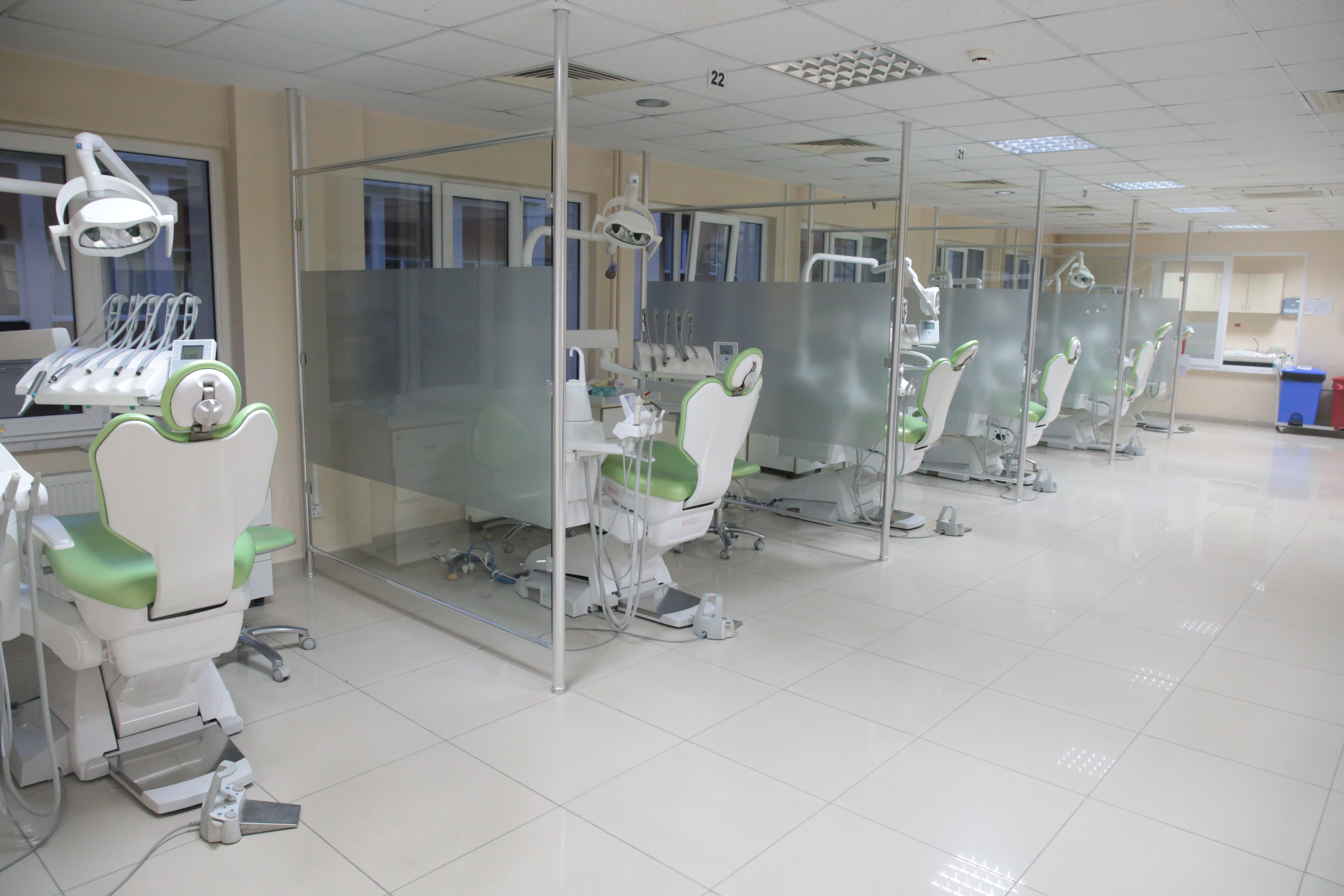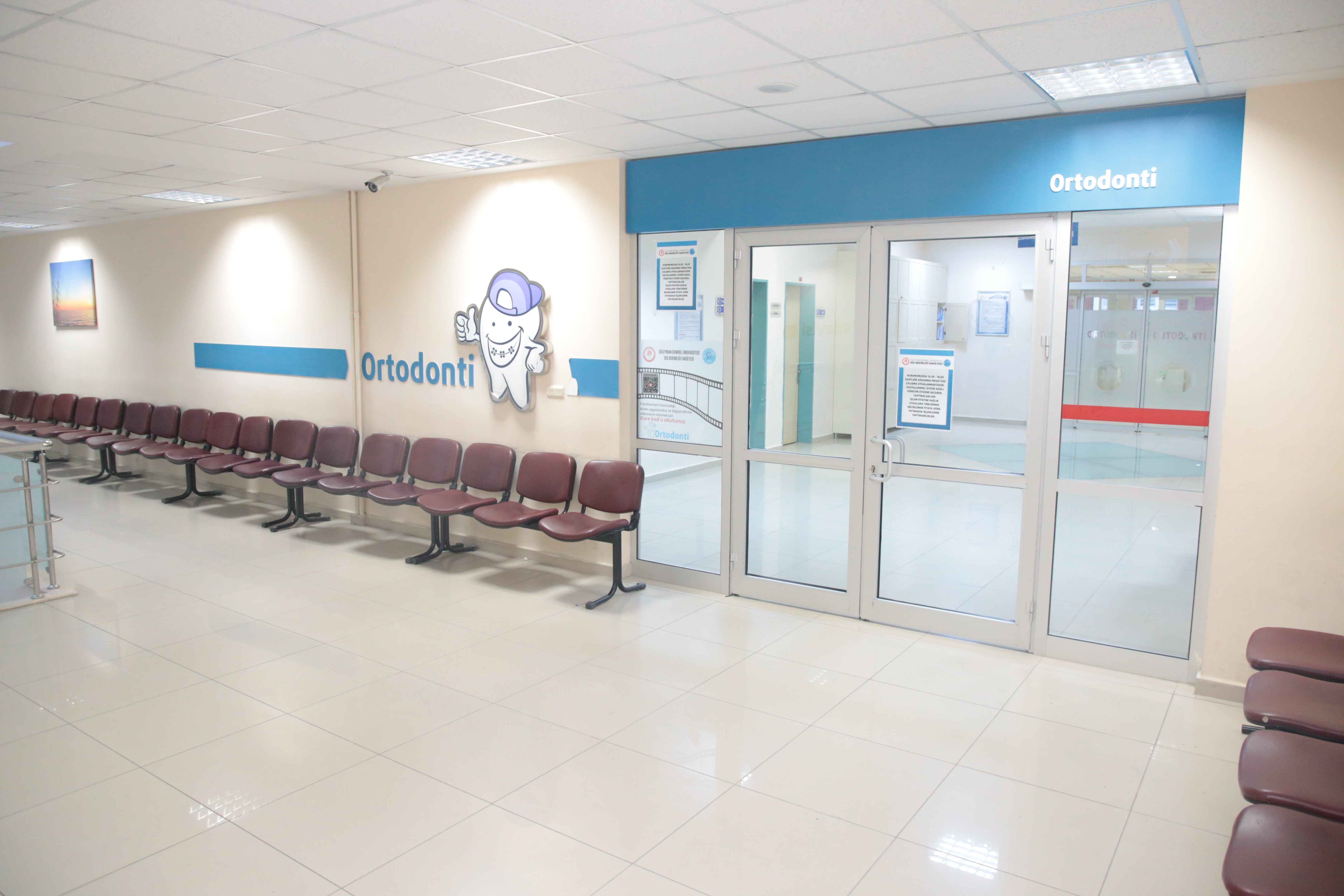Orthodontics
|
Chair Assoc. Prof. Dr. N. Ebru ŞENIŞIK
Academic Staff Assoc. Prof. Dr. N. Ebru ŞENIŞIK Research Assistant Ezgi VENEDİK Research Assistant İrem YILMAZ Research Assistant Duygu ESKİN Research Assistant Zeynep AKPINAR Research Assistant Burcu AYGÜN AKBULUT Research Assistant Aybuke Dilara ARSLAN Research Assistant Erencan YAZAN Research Assistant Mehmet Onur ÖZASLAN
Communication 0246 211 33 53 |
HISTORY Department of Orthodontics was established in 1995. Our department has trained a lot of orthodontists so far.
LOCATION and CAPACITY Our department provides service with a total of 41 dental units in 2 orthodontic clinics and 1 cleft lip and palate clinic. In addition, our clinic has a photo room, X-ray room, 3D digital modeling room (intraoral), 3D face scanning room, technician laboratory, plaster room and 2 sterilization rooms.
ORTHODONTIST SPECIALIST TRAINING PROCESS The training period for research assistants is 4 years. During this training period, rotations are made in the departments of oral and maxillofacial surgery (1 month) and periodontology (1 month).
DEPARTMENT OF STUDY AREAS In all age groups; Tooth crowding, Incompatibilities in jaw relations (Dentofacial orthopedic approaches / Orthognatic surgery), Cleft lip and palate, Impacted teeth, Multidisciplinary approaches.
FACILITIES Cleft lip-palate clinic Photography room X-ray room 3D digital modeling room (intraoral) 3D face scanning room
ORTHODONTIC TREATMENTS
Fixed applications: Bracket attachment, the most common method, is done using wires, brackets, and elastics. Brackets are adhered to the teeth, and the wires are passed through the brackets and apply force to the teeth. In this way, the teeth are moved gradually and their proper positioning is ensured. This treatment can be applied with or without tooth extraction. The treatment can take several months or years, and adjustments are made every month to ensure that the improvement in the teeth is as desired.
Removable applications: Aligners (transparent plaques): It is a form of treatment applied to align the teeth as an alternative to the fixed treatment by attaching brackets for adults. Aligners are usually transparent and are removed for eating, brushing and flossing. Appliances developed to reposition the jaw: These devices, called splints, are placed on the lower jaw or upper jaw and help the jaw to close in a better position. They are also used to correct joint disorders. Jaw expander etc: It is a device that provides the expansion of the upper jaw. Thanks to the force applied by the screws, the bone under the palate moves and opens. Removable Reinforcers: These are passive appliances used to keep the teeth in place and prevent them from returning to their original state after the treatment is over. They can also be used to break habits with a little modification.
Headgear (Neckrest-Face Mask, etc.): It is a device placed on the back of the head and connected to the front of the head with a band and a metal wire. Headgear slows the development of the upper jaw and keeps the posterior teeth in place, while allowing the front teeth to move backwards. The face mask, on the other hand, is a device that enables the upper jaw to be positioned in front by taking support from the forehead and chin tip in individuals with upper jaw insufficiency. The chinrest consists of bands placed on the back of the head and the tip of the chin. It is used to slow down and direct the development of the lower jaw.
Informed Consent Forms Clear Aligner Informed Consent Form Cleft Lip and Palate Informed Consent Form Extra-Oral Appliance Informed Consent Form Non-Removable Fixed Orthodontic Treatment Informed Consent Form Orthodontics Informed Consent Form Orthognathic Surgery Informed Consent Form Removable Appliance Informed Consent Form Skeletal Anchorage Application Informed Consent Form
|


